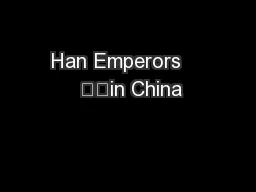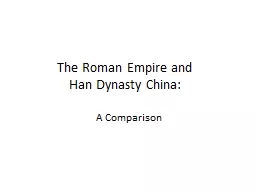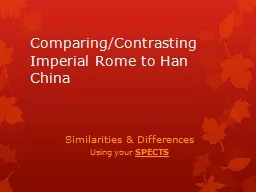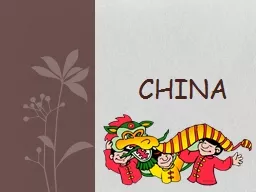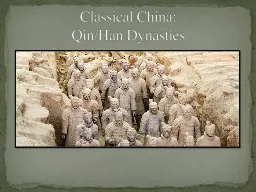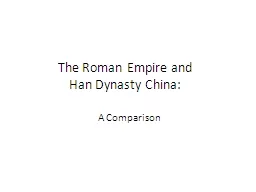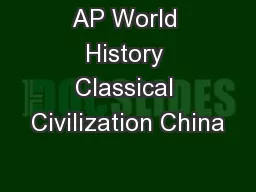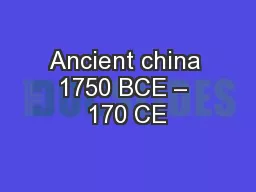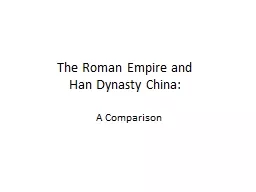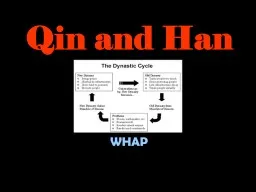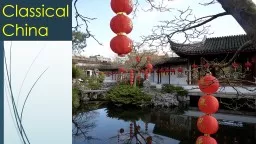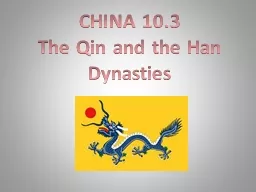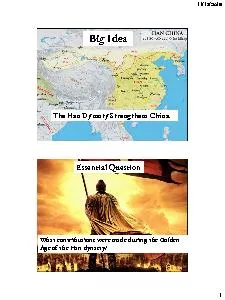PPT-Han Emperors in China
Author : conchita-marotz | Published Date : 2016-05-15
202 BCE CE 220 Qin Dynasty China is unified under Shi Huangdi He died in 210 BCE Son weak ruler Government fell apart Han dynasty Liu Bang Destroys rival kings
Presentation Embed Code
Download Presentation
Download Presentation The PPT/PDF document "Han Emperors in China" is the property of its rightful owner. Permission is granted to download and print the materials on this website for personal, non-commercial use only, and to display it on your personal computer provided you do not modify the materials and that you retain all copyright notices contained in the materials. By downloading content from our website, you accept the terms of this agreement.
Han Emperors in China: Transcript
Download Rules Of Document
"Han Emperors in China"The content belongs to its owner. You may download and print it for personal use, without modification, and keep all copyright notices. By downloading, you agree to these terms.
Related Documents

